Stages Cycling range overview: details, pricing and specifications
Everything you need to know about the latest range of Stages Cycling computers, smart bikes and accessories
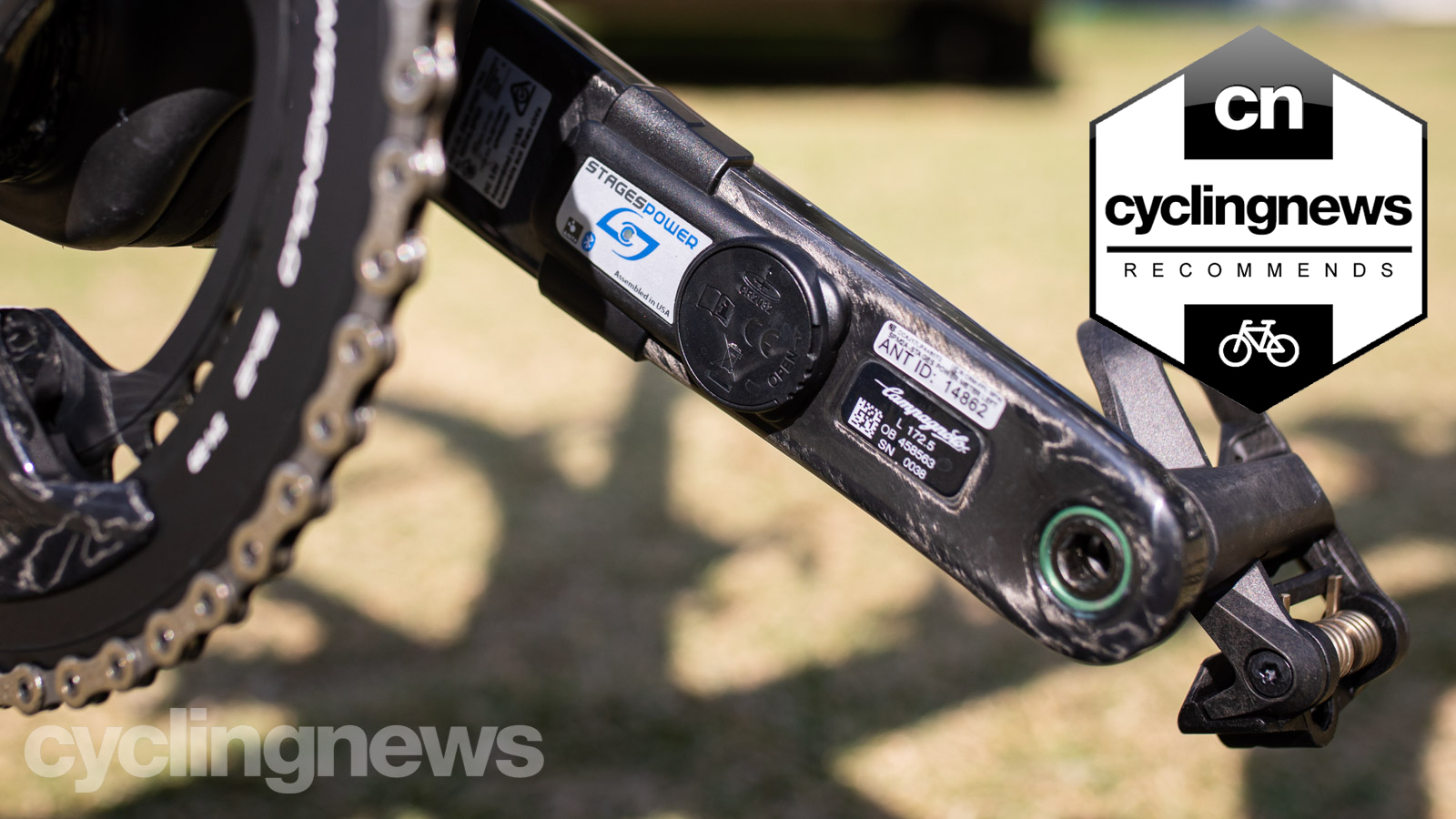
Stages Cycling came to the market with single-sided crank-based power meters that left the rest of the industry playing catchup. Its first unit, launched in 2012, had automatic temperature compensation, required no magnet to detect cadence (and by proxy, power), it spoke Bluetooth and ANT+ and, most importantly, were vastly cheaper than any of the best power meters on the market at the time.
While the brand was a newcomer into the cycling industry proper, it had long been a top player in spin bikes, pioneering direct-force power measurement which has been adopted across the category. Since its first power meter was launched, Stages has earned five wins at the Tour de France, and has broadened its range that spans everything from the best exercise bikes to the best cycling computers.
- Best power meters: Consistent power data for both indoor and real-world cycling
- Zwift: your ultimate guide
- Indoor cycling: A comprehensive guide
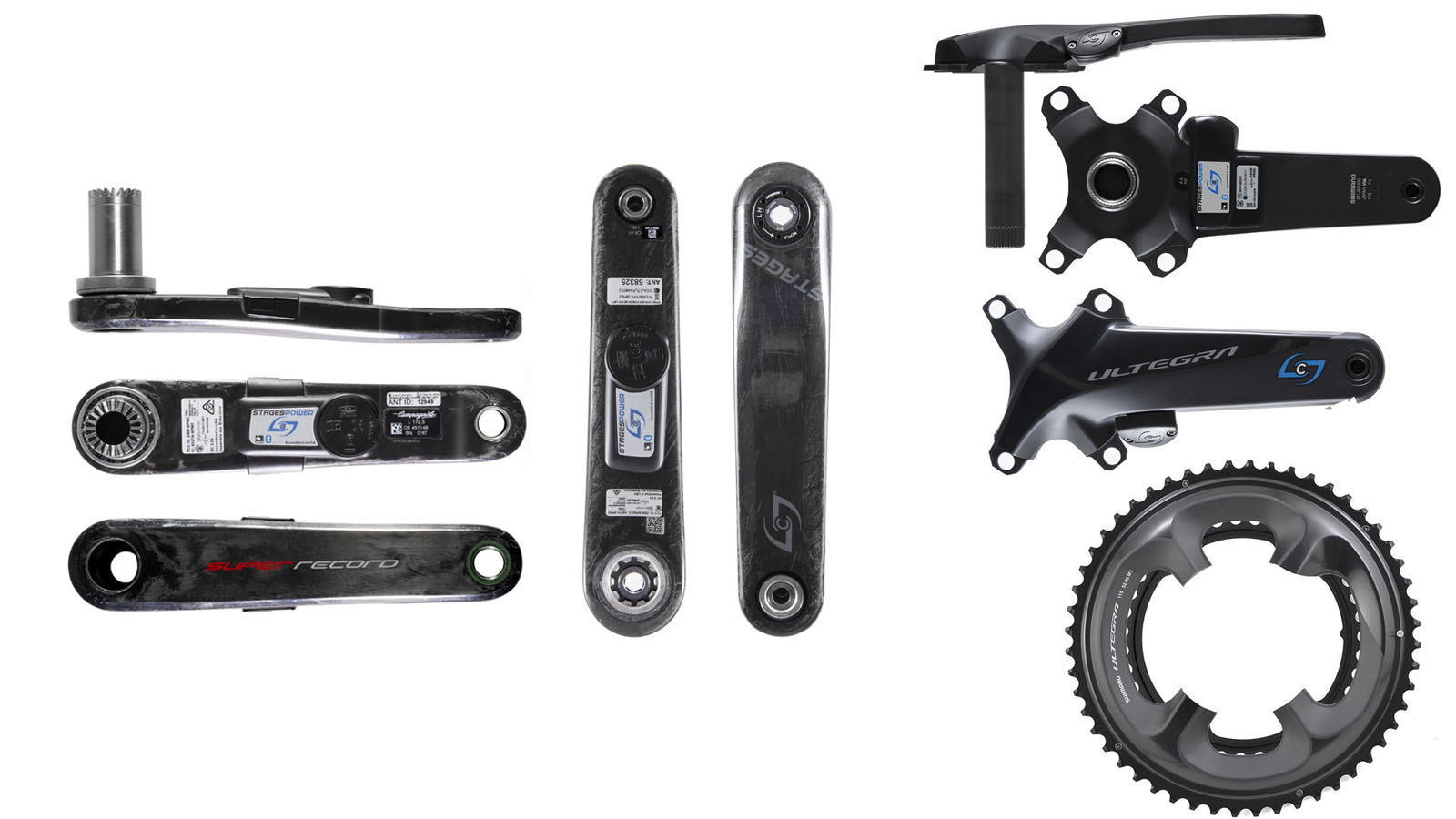
Stages Gen 3 single-sided power meter
Specifications
Reasons to buy
Reasons to avoid
Now in its third generation, the Stages single-sided power meter has seen incremental improvements over the past two iterations. The issues with the battery door coming loose and allowing moisture ingress has been solved, the casing has decreased in size, eliminating some (not all) of the frame compatibility issues, and new electronics and radio antennas that are said to be six-times stronger have addressed issues with dropouts. Powered by a coin cell battery, it will last months in use, and the entire unit adds about 15g to the weight of the crank arm.
Available for both carbon and alloy crank arms, the claimed accuracy is +/-1.5-per cent and the Boulder, Colorado-based outfit has also added a battery status LED. The units are available pre-installed from Stages, or you can send them a crank arm, and they will install the hardware for you — though this service has been disrupted by COVID-19.
Stages offers its power meters on crank arms from Shimano, Campagnolo, Cannondale, FSA, and manufacturer its own left-side carbon crank arms that are compatible with SRAM and Race Face cranks.
New for generation three, the single-sided power meters are available for both the left or right crank. By moving the power pod across, it can be tucked behind the chainrings to eliminate the frame clearance issues. If you already have a left-side crank arm of either the Gen2 or Gen3 unit, it can be paired to a right-side unit to unlock LR power, pedal smoothness, and torque efficiency metrics. These are only available on Shimano Dura-Ace, Ultegra, 105, XTR, and XT cranks at the time of writing.
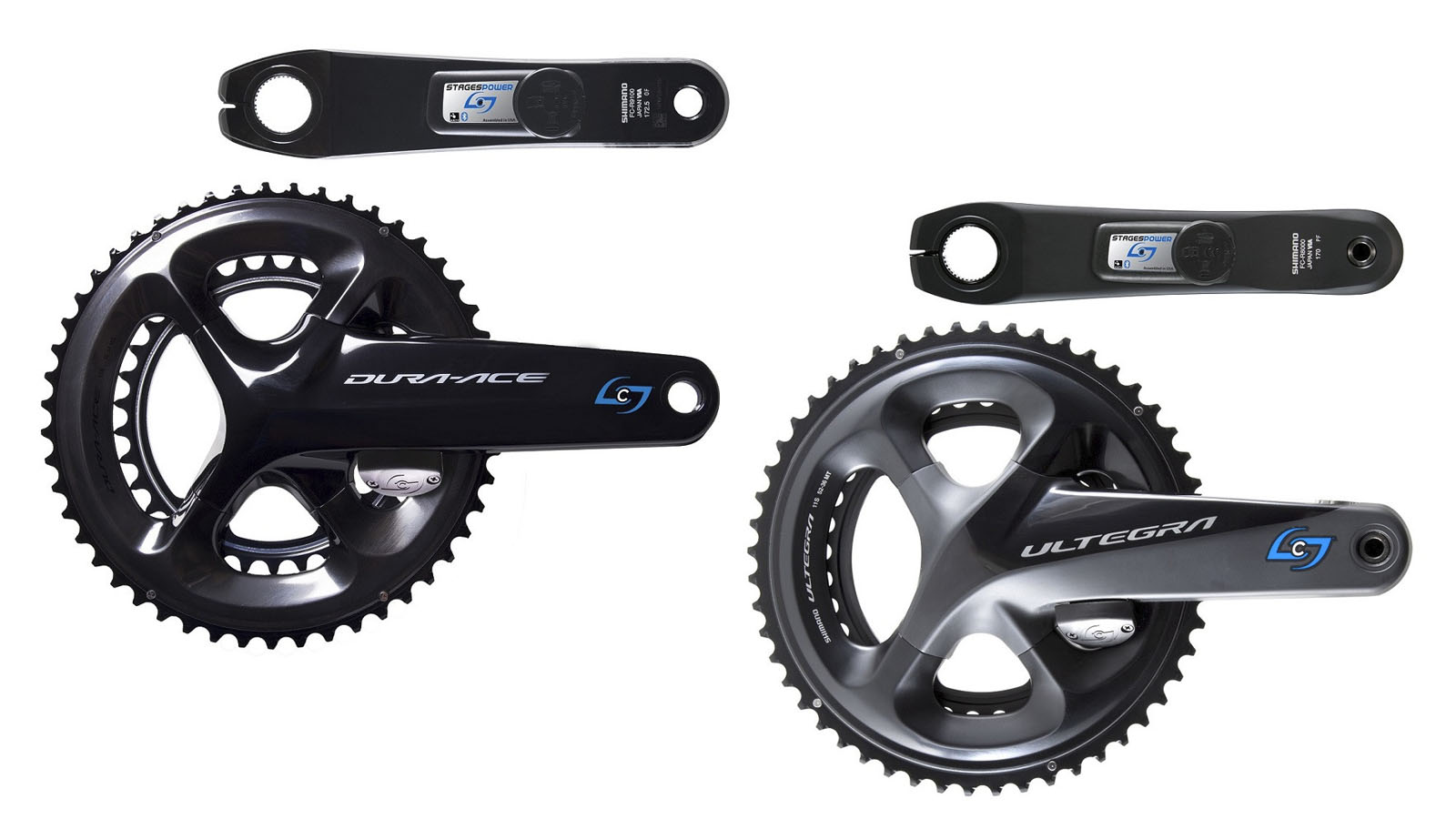
Stages Gen 3 dual-sided power meter
Specifications
Reasons to buy
Reasons to avoid
The Gen 3 dual-sided power meter places a Stages power pod on each crank arm. While the single-sided units take power from one leg and double it, the dual-sided power meter offers a true power reading and can even spit out individual left-right power, pedal smoothness and torque effectiveness.
Claimed to have a +/- 1.5 per cent accuracy, the power meter adds about 35g total and is powered by two coin-cell batteries. Like the single-sided units, there is no need for a cadence magnet, temperature compensation is automatic, and there is an LED battery indicator light. For the time being, Stages is only making dual-sided units for Shimano Dura-Ace, Ultegra, XTR and XT cranksets.
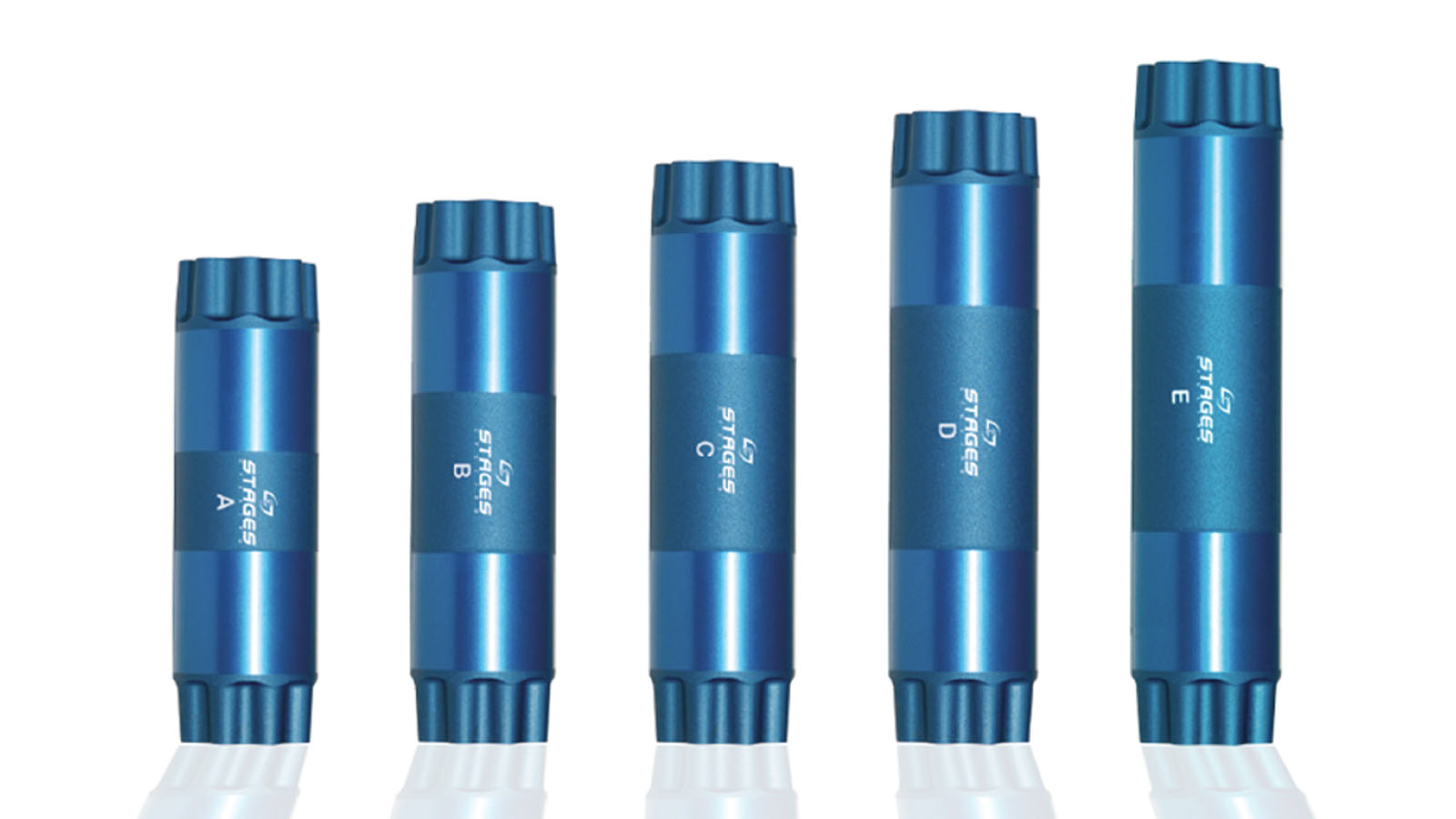
Stages 30mm spindle
Specifications
Reasons to buy
Reasons to avoid
If you're after one of Stages Carbon cranks for SRAM BB30 cranksets, you will need one of Stages' 30mm retrofit spindles. Manufactured by FSA, the 30mm spindles are forged and machined out of aluminium specifically to play nicely with SRAM, Race Face and Specialized S-Works cranks.
They are available in seven widths to match drivetrain-specific spacing and Stages has a handy compatibility chart the lays out what works with what in plain English.
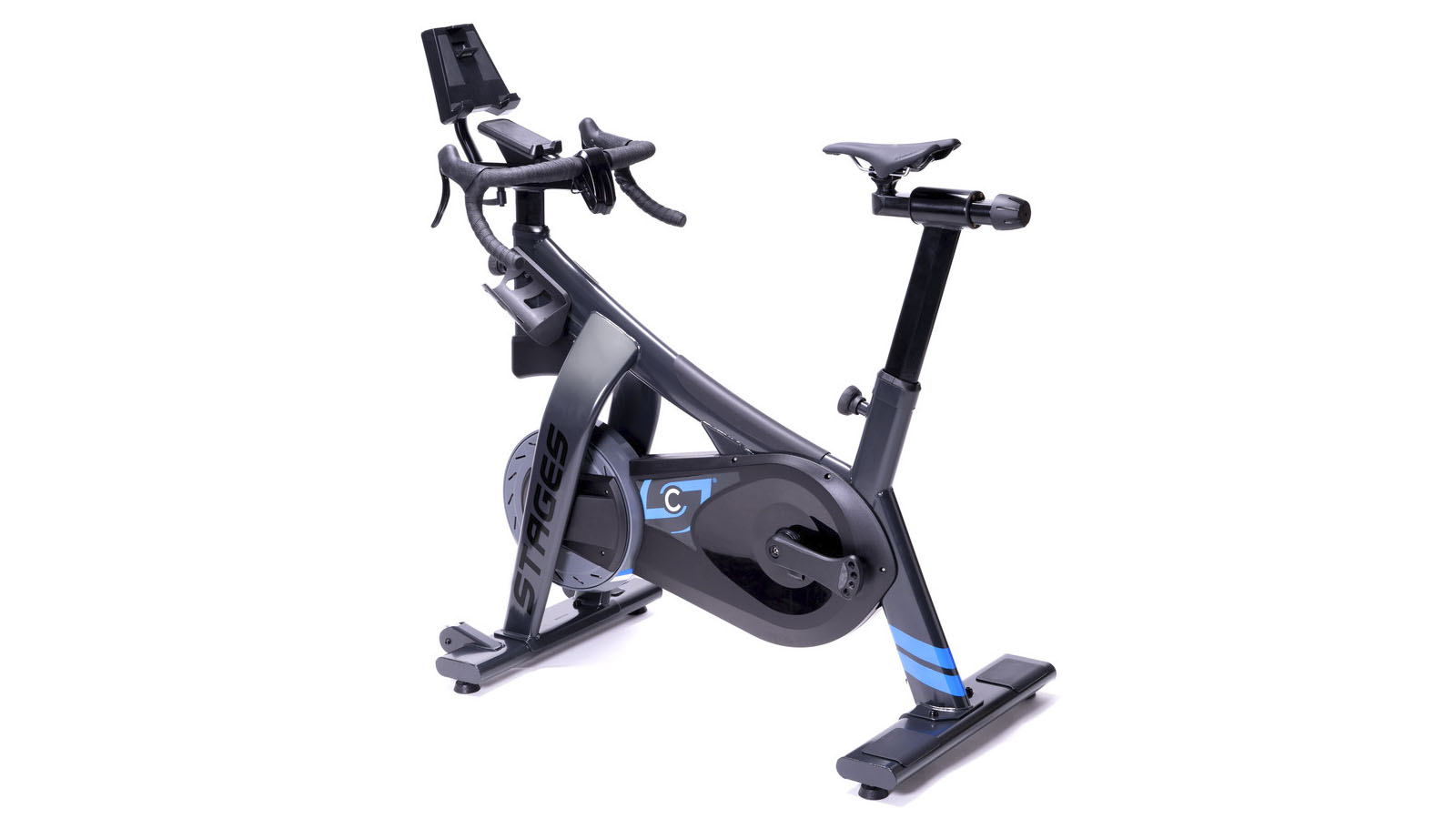
Specifications
Reasons to buy
While Stages has been in the studio spin bike game for some time, the SB20 smart bike is the brand's first attempt at an interactive smart bike — meaning it has a freewheel and standard drop bars, instead of the bull-horn-style spin bars. Borrowing the basic skeleton from its range of spin bikes, the SB20 uses a Gates Carbon Belt and a 22.7kg / 50lbs flywheel to generate up to 2,200 watts of resistance. The power reading comes from the brand's Gen3 dual-sided power meter mounted on the cranks. It brings the same +/-1.5 per cent accuracy and automatic temperature compensation — though you won't have to worry about the coin cell batteries.
The drop bars are shod with a specially-made set of TRP levers that have shift buttons and functioning brakes — though we're yet to see that in a training app, yet. The bike can be set to 'Dream drive' through the companion app, which gives you up to 50 gears to shift through at customisable intervals.
Every touchpoint is adjustable, as is crank length, and the bike uses a standard bar and saddle, so if you don't like what the SB20 comes with, you can slot in your own. It should come as no surprise the bike requires mains power, but with that comes two USB charge points and a decent-sized phone and or tablet holder. The bike broadcasts in ANT+ and Bluetooth and is universally compatible with the best indoor cycling apps.
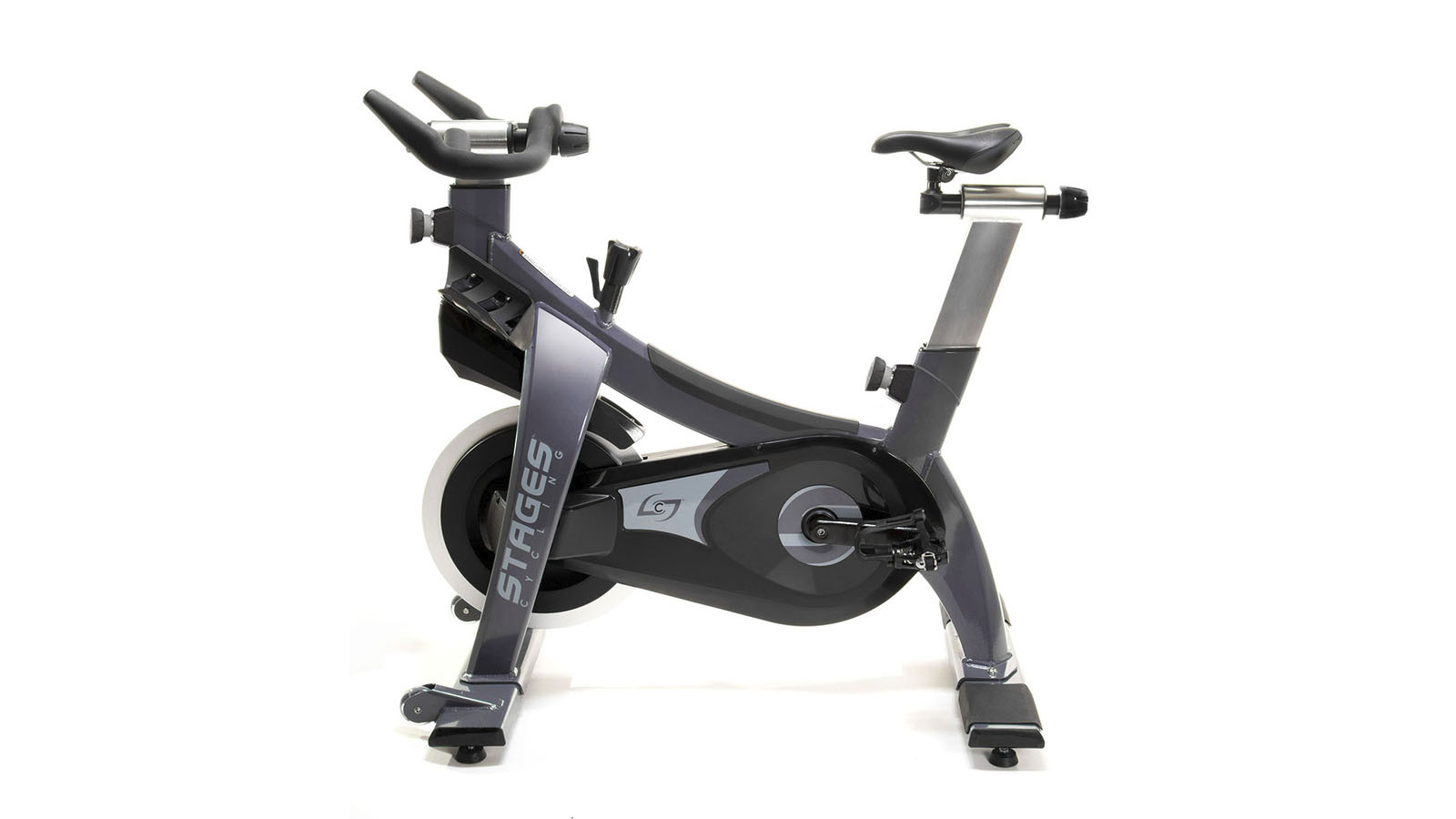
SC2-Plus
Specifications
Reasons to buy
Reasons to avoid
The SC2-Plus is a paired down version of the brand's smart bike that knocks $500 bucks off the price tag. This slightly cheaper version swaps the interactive resistance unit for a manually adjustable magnetic version that is micro-adjustable via the top tube mounted knob or has a three-position Sprint Shift lever for big jumps in power.
The bike still utilises a dual-sided Stages Gen3 power meter and broadcasts in both Bluetooth and ANT+ so that it can be used with the training app of your choice, but again, it's not interactive, so it cannot be controlled your chosen app. The bike still has a 22.7kg / 50lbs flywheel and a largely maintenance-free Gates Carbon Belt Drive. The SC2-Plus also maintains the vast majority of the adjustability, though the cranks are fixed and use a Stages Rhythm bull horn handlebar.
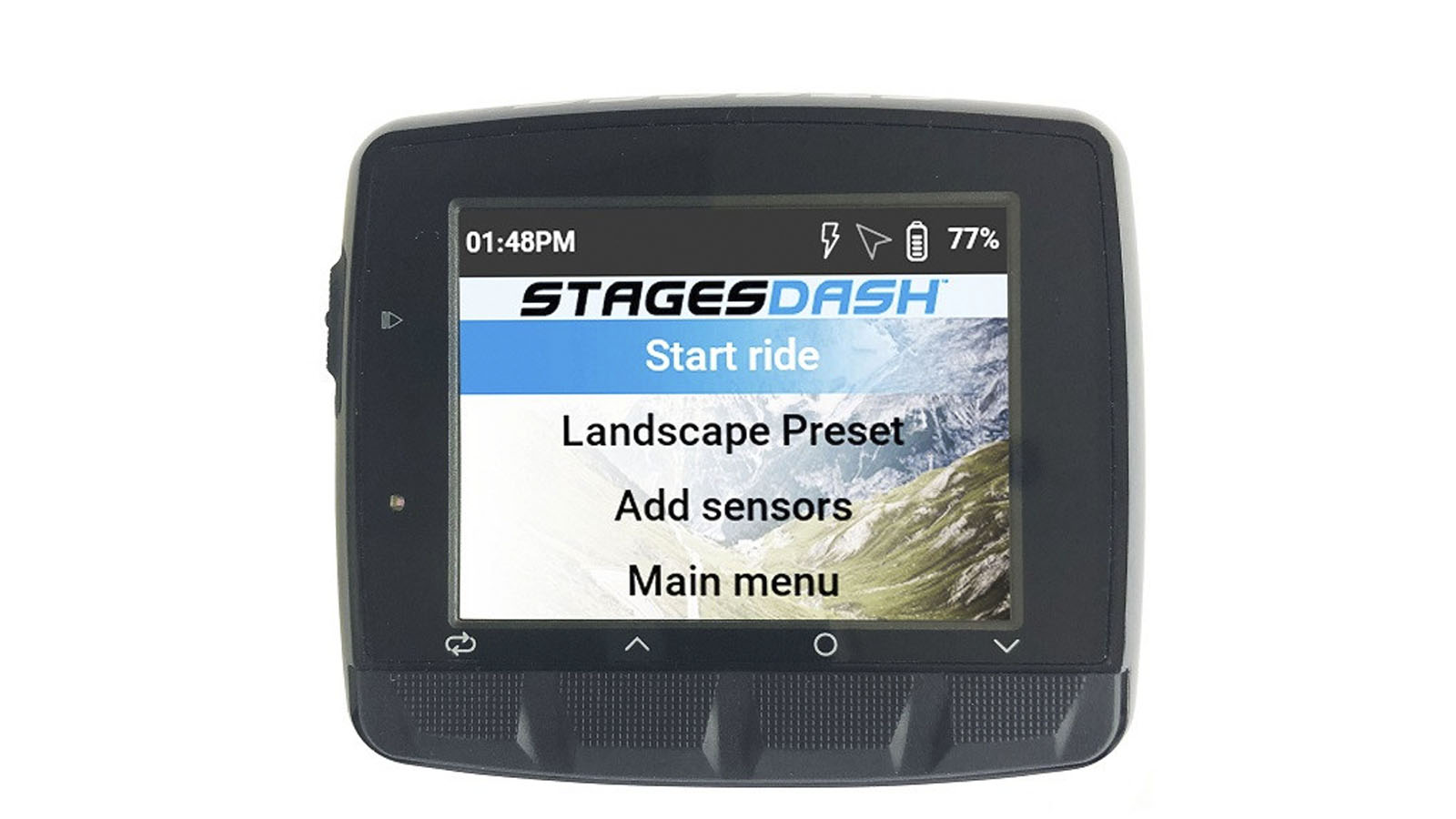
Specifications
Reasons to buy
Reasons to avoid
Stages' original Dash was laser-focussed on power training; with the launch of the L50, the feature set was broadened with a colour screen, preloaded OSM base maps, turn-by-turn directions and more. The large 2.7in screen can be mounted in portrait or landscape orientation, but it's not touch-enabled, so you'll need to use the four buttons to navigate through the screens and maps.
Stages calls the screen Everbright, which is an understatement because it is seemingly more powerful than the sun—the bright and colourful display shows maps in detail, and full-screen graphic data fields and workout screens too. The Dash also sees what Stages call adaptive training zones; if you don't already know your threshold and power zones, just ride with your power meter for a while, and it will give you an educated guess without the need for an FTP test.
With a battery life claimed to last between 11-15 hours, the L50 integrates with the Stages Link companion app for ride uploads over the air firmware updates, screen customisation and in-depth data analysis.
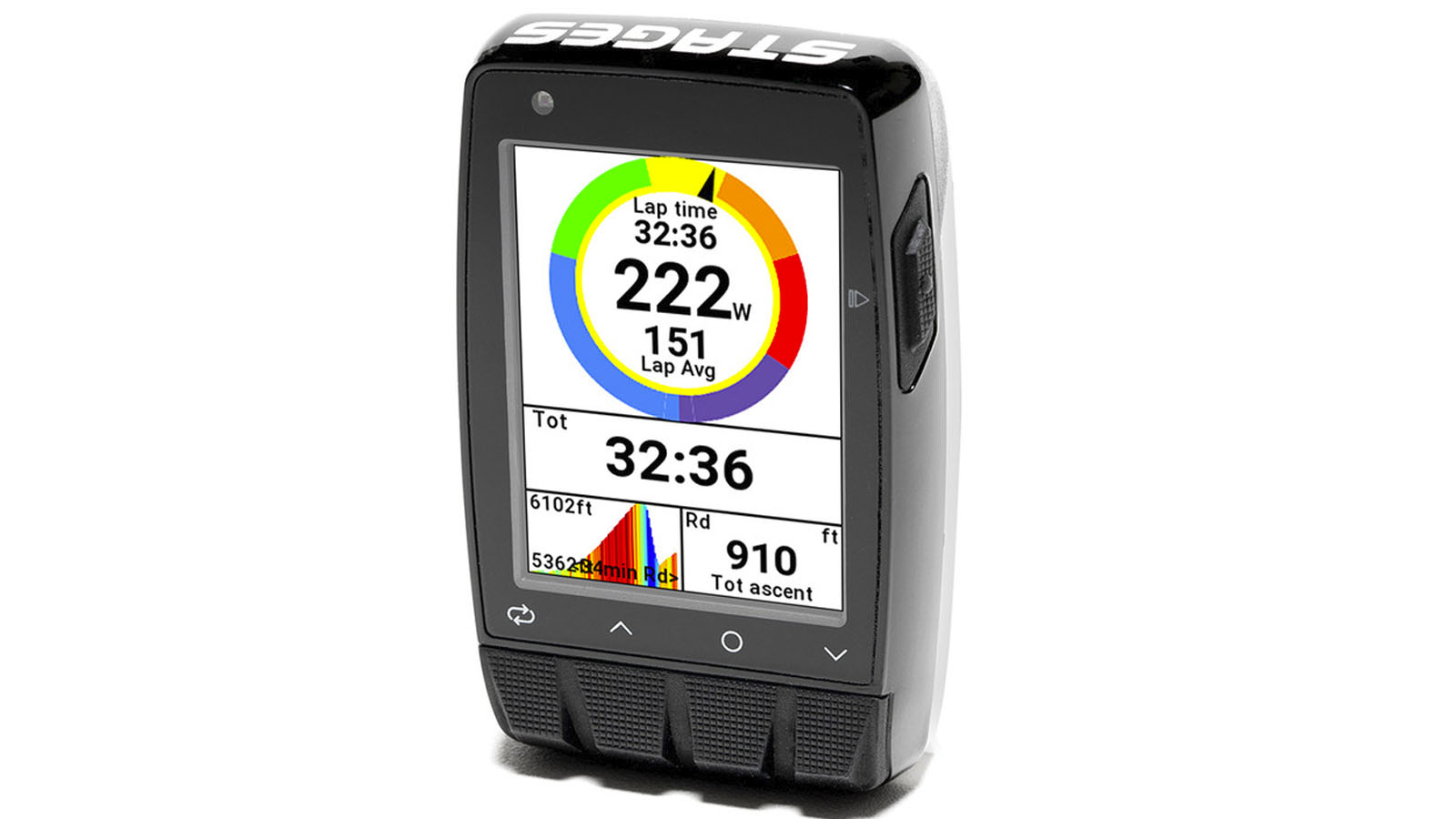
Stages Dash M50
Specifications
Reasons to buy
Reasons to avoid
Similar to how the Wahoo Elemnt Bolt had the same features as the original Elemnt but in a slightly smaller form factor; the Stages M50 and L50 are based on the same concept. The 'M' and 'L' literally stand for the medium and large.
The M50 has a 2.2in Everbright colour screen, can be mounted in both portrait and landscape, and sees the adaptive power zones that will estimate your threshold and training zones based on rides with your power meter. It's ANT+, Bluetooth and GPS enabled, sees preloaded based maps, and will even give you turn by turn directions.
Inside Tadej Pogacar's Tour de France-winning Stages Dash M50
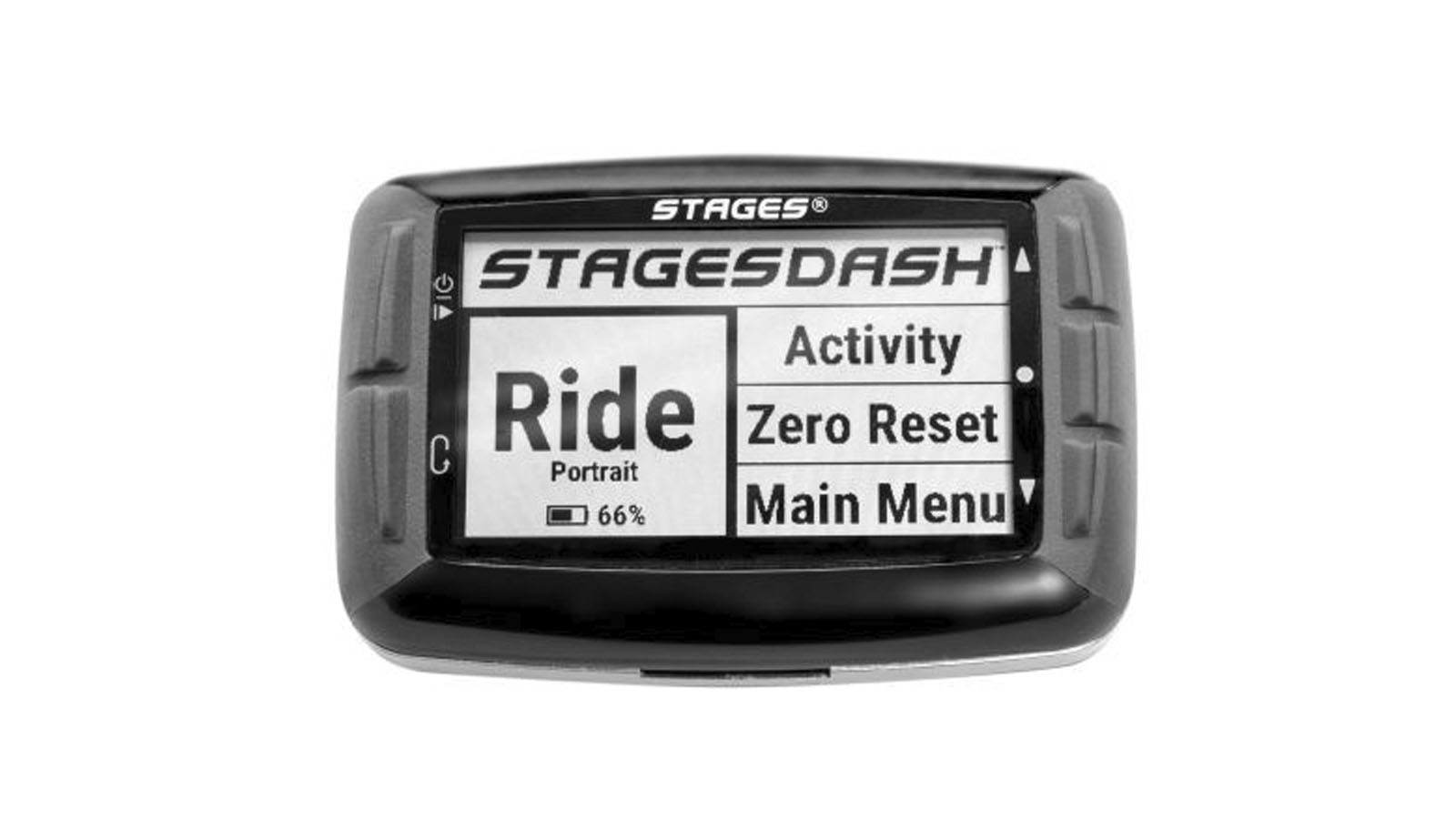
Stages Dash L10
Specifications
Reasons to buy
Reasons to avoid
The L10 is an updated version of the original Dash. While the first head unit from the Boulder, Colorado outfit was a bare-bones training tool, the L10 has been updated with a new chipset that makes it considerably faster. It's GPS enabled, speaks both ANT+ and Bluetooth, and can provide directions but breadcrumb style because there are no base maps.
For a computer in its price point, few offer this much information to provide advanced power metrics, including TSS, and guide you through interval workouts. The 2.7in screen can display up to 16 data fields at once, and the battery will last up to 24-hours between charges.
Get The Leadout Newsletter
The latest race content, interviews, features, reviews and expert buying guides, direct to your inbox!
Based on the Gold Coast of Australia, Colin has written tech content for cycling publication for a decade. With hundreds of buyer's guides, reviews and how-tos published in Bike Radar, Cyclingnews, Bike Perfect and Cycling Weekly, as well as in numerous publications dedicated to his other passion, skiing.
Colin was a key contributor to Cyclingnews between 2019 and 2021, during which time he helped build the site's tech coverage from the ground up. Nowadays he works full-time as the news and content editor of Flow MTB magazine.